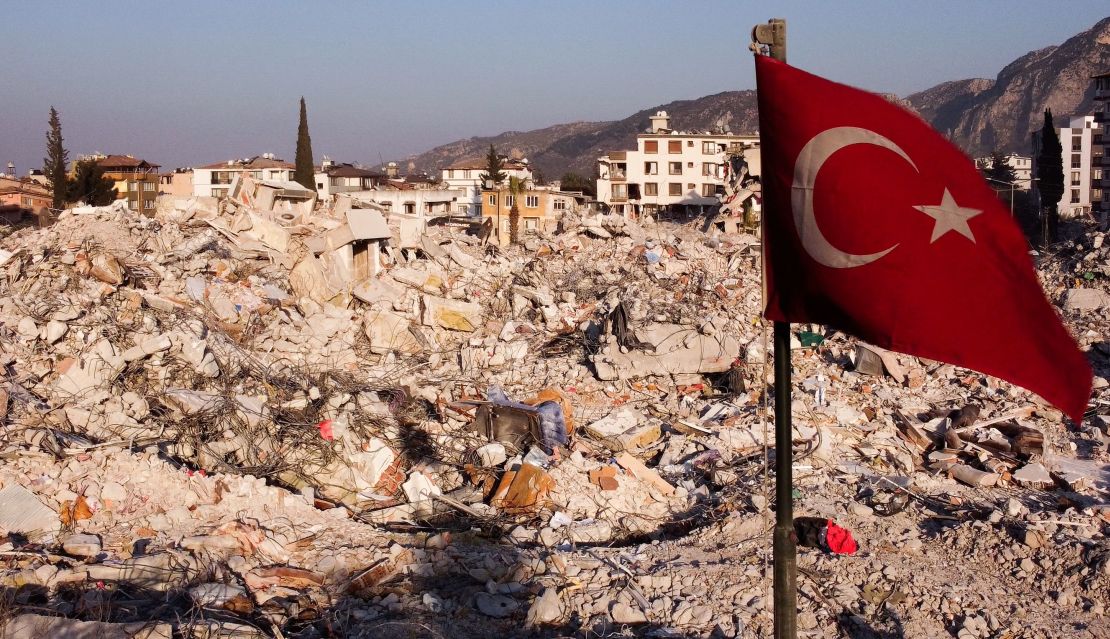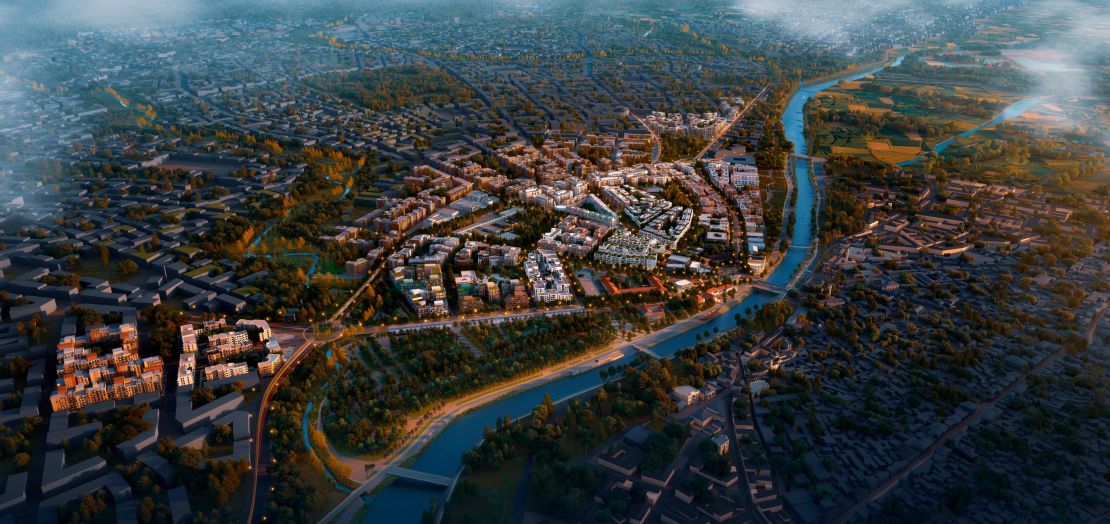Editor’s Note: Call to Earth is a CNN editorial series committed to reporting on the environmental challenges facing our planet, together with the solutions.?Rolex’s Perpetual Planet Initiative?has partnered with CNN to drive awareness and education around key sustainability issues and to inspire positive action.
The earthquake itself could be measured in seconds, but for the people of Antakya, Turkey, the reverberations were scarcely quantifiable.
More than 50,000 people died and millions more were displaced when two earthquakes of magnitude 7.8 and 7.5 rocked the country’s southern region and northern Syria on February 6 last year. The United Nations put the rebuild cost for the region at more than $100 billion.
The city of Antakya (historically known as Antioch), capital of Hatay Province, was one of the worst hit in Turkey, with almost 80% of buildings reportedly damaged beyond repair.
It was devastation “beyond imagination,” according to Nicola Scaranaro of Foster + Partners, the architectural firm that last month published its masterplan to not only rebuild and revitalize the city, but to “future proof” it against earthquakes, flooding and other natural disasters.
It’s an aim easier said than achieved in an area historically prone to earthquakes, with last year’s the seventh to have destroyed Antakya since its founding in fourth century BC, Scaranaro said.
The city is nestled at the foot of Mount Habib Neccar in the valley of the Asi River, and its proximity to the river means the destructive impact of earthquakes is exacerbated by a phenomenon dubbed soil liquefaction, which sees soil lose its stiffness and act more like a liquid.
With swathes of buildings along the banks of the Asi, flooding has also long posed a danger to Antakya residents. Over 45,000 residents across 2.5 million square meters were at risk of being affected by floods even before last year’s earthquake, Foster + Partners estimated, with the likelihood of incidents only set to rise amid the climate crisis.

Resilience
Ensuring resilience to both recurring threats was at the heart of considerations when, six months after the earthquake, the firm was commissioned by Türkiye Design Council — a non-governmental organization — to lead an international consortium of teams in developing a strategy to rebuild the region.
Architecture and street design will act as the first line of defense against earthquake impact, including compact buildings that should cope better with seismic activity than the large and long L-shaped structures that dotted Antakya previously.
Neighborhood “superblocks”, inspired by those in Barcelona, would promote car-free zones that ensure multiple routes in the wake of a disaster; both for emergency services and for residents escaping.
This set up also benefits quality of life, Scaranaro explains, leading to lower traffic — a big shift for a city previously dominated by cars — and a greater number of green urban spaces.
Green spaces can play an integral part in safeguarding against flooding, he added, with significant land along the river marked out to not be rebuilt on. Instead, continuous river frontage and parks will fill these high-risk areas, acting as a natural “buffer zone” when the banks burst and absorbing flood water.

Planted with native species, the network of green spaces and local community parks will provide vital habitats for flora and fauna?and act as “green corridors,” enabling wildlife to move freely. The?approach will also help to meet the masterplan’s aim of doubling the amount of dedicated green space per capita.
“We felt that (previously) the access to green spaces was not very democratic,” Scaranaro said.
“If we actually use what is there, respect nature, and create this beautiful corridor of biodiversity, we give the city some nice pedestrian routes, cycling routes, and green spaces.”
How 'sponge' cities can deal with floods
Building trust
Construction commenced while the masterplan was being drawn up, with engineering consultancy firm Buro Happold forecasting that the full revitalization of the city will take 10 years.
However, the masterplan’s authors hope lessons can be learned long before the last brick is laid. The planning consortium wants to set a “new co-operative blueprint for the revitalization of disaster-struck cities” across the globe, a climate-first approach that Scaranaro believes has been sorely lacking.
“It should be at the forefront — it’s not always,” he said.
“Unfortunately, as we read the news there’s many similar natural disasters happening … How can we implement this level of resilience before something happens?
“It’s paramount that we look at it. We use the term sustainability, but sometimes we need to give a meaning to it.”
Yet despite its worldwide scope, the plan was primarily written for, and partly by, the people of Antakya, Scaranaro insisted.
Amid all the talk of revitalization and new features, preserving the “spirit” of the city was a cornerstone objective. Older citizens in particular were invited to face-to-face interviews to relay their memories of, and hopes for, the city.
In one interview with an elderly resident living in one of the container compounds set up for displaced citizens in the immediate aftermath of the earthquake, Scaranaro was told: “I don’t trust these buildings anymore, because these buildings have betrayed me.”
For the Italian, it was a quote that underpinned his purpose in the city.
“This is not about buildings; it’s about building trust and a sense of belonging. We want people to feel like they built the place back,” Scaranaro said.





![The nearby Asi River is a key part of the masterplan. Having formerly posed a large flooding risk due to its proximity to a swathe of buildings, under the new vision the river would be bordered by a range of parks, pocket gardens and other open spaces that would act as natural "green buffers" in the event of flooding. [Pictured, artist's rendering]](https://media.cnn.com/api/v1/images/stellar/prod/240814105316-07-antakya-gallery.jpg?c=original&q=h_447,c_fill)

![Key features to minimize the destructive capacity of earthquakes include the absence of any cul de sacs, with an emphasis on "superblock" neighborhoods that improve circulation while providing central squares that can act as meeting hubs in the event of a natural disaster. [Pictured, artist's rendering]](https://media.cnn.com/api/v1/images/stellar/prod/240814105123-06-antakya-gallery.jpg?c=original&q=h_447,c_fill)











